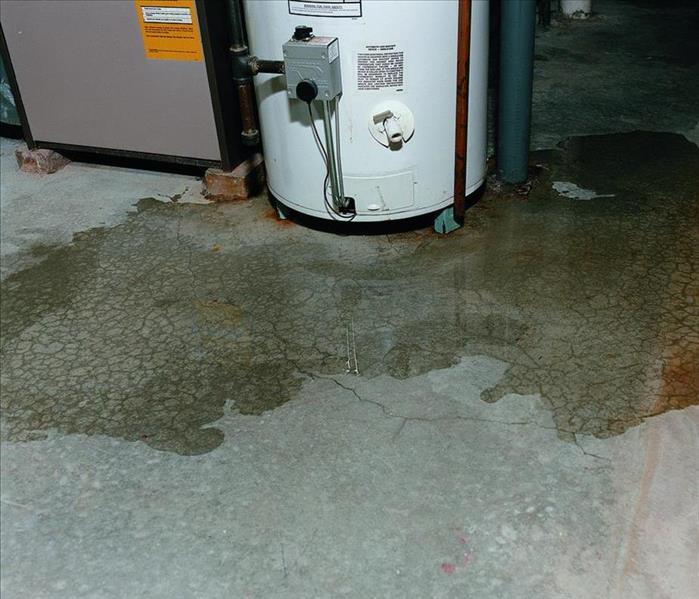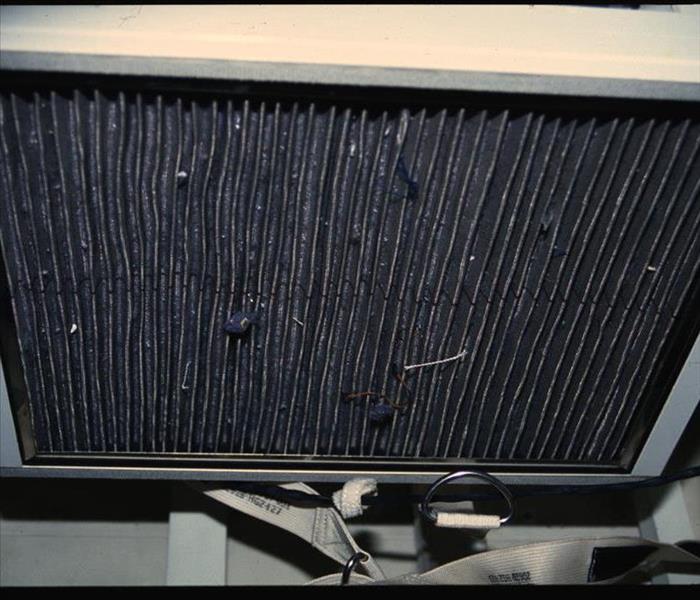How To Clean A Basement Floor Drain
2/18/2019 (Permalink)
mold growthThere are so many areas of the home to care for, and there’s no denying that most of our attention is focused on the living spaces we use most regularly. However, it’s important to keep an eye out for issues lurking in the spaces we visit less frequently, especially the basement. Basement areas are particularly at risk for a number of reasons, especially for water damage. One problem many homeowners face is a clogged basement floor drain. So, what is a floor drain and what are the steps for how to clean a basement floor drain? Read on to learn what is a floor drain, how it gets clogged, and steps on how to clean a basement floor drain.
What is a Floor Drain?
Having a stronger understanding of what is a floor drain can help you best prevent clogs. Basement floor drains serve an important purpose, which is to act as an outlet for any water that enters the area. For example, condensation for your heating, ventilation, and air conditioning (HVAC) system, water leaking through the foundation of your home after a heavy rain, or water draining from the water heater all rely on the floor drain to prevent flooding. An effective floor drain is situated at the lowest point in your home to facilitate the flow of water and is typically connected to your house’s sewer system. In some cases, a floor drain can also be connected to a sump pit or sewer pit outfitted with an ejector pump. In these cases, the floor drains lead to a pit that uses a pump to lift the water outside of your home.
What Causes Basement Floor Drains?
The most important question to ask when wondering how to clean a basement floor drain is what actually caused the clog in the first place. It may come as no surprise that a basement drain clogged with a buildup of dirt or debris is the most common issue. Over time as your floor drain drains water flowing into your home from various sources, dirt and debris will begin to build and result in a basement drain clogged with an obstruction. A main line clog can occur in different spots within the floor draining system, such as the house drain, house trap, or house sewer.
Another issue that can occur with a basement floor drain, is that you could experience water coming up through the basement floor drain. Water coming up through basement floor drain can happen when a heavy rainstorm leads to a surcharge in the drain system. The surcharge could also take place in the public sewer system. Either way, you could be left dealing with water damage.
Signs of Clogged Floor Drains
One of the most obvious signs of a basement drain clogged up and in need of cleaning is a backup of water that won’t flow down the drain. If you notice standing water around the floor drain in your basement, it is not in working order and likely has a clog that requires cleaning. When a basement drain is clogged in your home, it’s important to address this issue as soon as possible, as standing water can lead to water damage in your basement, including water damage to your floors and walls. Additionally, water damage is a primary cause of mold growth and is common in basements due to their typically moist environment. A basement drain clogged and resulting in mold growth is a serious risk to individuals living in a house, as ingesting or inhaling certain types of allergenic and toxigenic molds can lead to respiratory issues. Another risk of water damage caused by clogged floor drains is structural damage. When wood and other surfaces become wet, they lose durability and can start to break down.
Another sign of a floor drain that needs to be cleaned is an unpleasant floor drain odor. This unmistakable floor drain odor will be obvious, and will likely smell like the sewer your floor drain connects to.
Steps to Clean the Floor Drain
Now that you know what is a floor drain and causes for clogs in floor drains, it’s time to learn how to clean a basement floor drain. For this cleaning, it is recommended that you contact a professional to get the job done properly and efficiently. If you decide to take on the job yourself, the first step is to gather the materials you’ll need throughout the process. What you’ll need for how to clean a basement floor drain are:
- Rubber gloves and facemask
- Plastic bag
- Screwdriver
- Pot for boiling water
- Bucket
- Vinegar and baking soda - have a gallon of vinegar and pound of baking soda on hand, these materials will work together to act as a floor drain cleaner
Once you have your materials gathered, you can take the following steps for how to clean a basement floor drain. First, using the screwdriver remove the grated top accessible on the floor of your basement. In most cases the floor drain cover is secured by screws, however, you may just be able to lift the top off using just your hands.
After the cover has been removed, conduct a quick inspection of the drain, examining for any buildups of dirt or debris. This is an essential step in how to clean a basement floor drain, as most backups are caused by debris. With rubber gloves on, work to clear out as much gunk as you can and disposing of what you pull out into the plastic bag.
The next step is to flush out the drain using your pot of boiling water. After pouring down the boiling water, let it sit for about 15 minutes. For a homemade floor drain cleaner, sprinkle in some of the baking soda to coat the sides of the drain, then pour in the vinegar. The vinegar will effectively kill bacteria and remove the unpleasant odor. You should let the vinegar sit in the floor drain for about ten minutes. Once it’s done sitting, rinse the vinegar out using more boiling water. It may be necessary to repeat these steps a few time to get all of the gunk and odor out of the floor drain.
The final step in the process for how to clean a basement floor drain is to clean the drain cover, then replace using the screws you removed. It is a good idea to clean the floor drain on a regular basis to prevent future clogs and minimize the risk of backups and water damage.

 24/7 Emergency Service
24/7 Emergency Service

